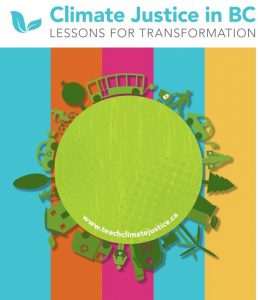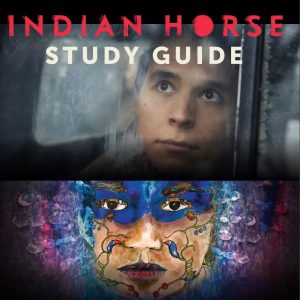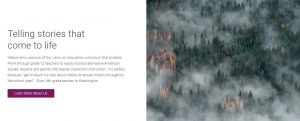This video was shared with my school district at our latest Aboriginal Focus Day. The points shared in this video for fairness, sharing and teaching our history with those who have recently come to Canada are important steps to Reconciliation. Taking action to create ReconciliACTION is important because it is 2018 and this knowledge needs to be shared.
Tag Archives: education
Post 1 – Blanket Exercise
I participated in my first blanket exercise. I was killed by small pox. My co-worker was taken from her land and moved to a Residential school. Another colleague survived Residential Schools but later died due to the negative impact it had on her life.
These experiences are not our own, but were lived by us during our last Non-Instructional Day. The Blanket Exercise shares First People’s history from across Canada in a unique way. I began to better understand what it meant to be killed by a disease I had no control over, I watched people be removed form their land, to be taken to Residential schools. This experience is one I want to share with my classes in the future.
Module 4 Weblog – Laurie Campbell
Module 4 Weblog
Laurie Campbell
In Module 4, I thought more about how we engage with other cultures as we examine our own cultural values. This was a hard one for me, as I’m not sure that I’ve spent the necessary time on introspection. One of the reasons I went into the MET program at UBC, however, is because of the time I’ve spent thinking about the value I place on STEM education for all students, including the indigenous students in my classroom. As a member of the “dominant” culture in southern Alberta, I think I will spend some time in this weblog looking at sites that promote science and technology learning for aboriginal students. Maybe this will be a way for me to reconcile my own cultural values with those of the Blackfoot students in my school. Aboriginal students in Canada seem to be missing out on some of the opportunities available to other students for STEM education. Perhaps one of the reasons STEM education is sought after in my (fairly affluent) school is because it is seen as a way for students to ‘get ahead’ and out-compete others for future job opportunities. I’m oversimplifying, but perhaps the value my culture places on individualism and competitiveness has something to do with the success some students have in STEM education, whereas someone from a more collaborative, community-valuing culture may not place the same emphasis on STEM. I’m sure my own prejudices are showing here, and I’m not at all sure that my wild guesses are even appropriate, but I’m hoping these links will show that STEM activities are indeed compatible with indigenous ways-of-knowing and of value to ALL learners, including aboriginal students.
- InSTEM – Indigenous Youth in STEM
https://actua.ca/en/programs/national-aboriginal-outreach-program/
I stole this link from Domenic Maggiolo (thank you!) in our course. InStem is “… a customized, community-based approach to engaging First Nations, Métis, and Inuit youth in locally and culturally relevant STEM education programs.” Actua received funding from the Government of Canada as well as Google and Suncor, among others. They describe themselves as “a national charity that is preparing youth to be innovators and leaders by engaging the in exciting and accessible STEM experiences that build critical skills and confidence” and advertise that they reach 250,000 youth each year. Their network members offer camps, workshops and clubs.
- Actua – Coding the Future: What Canadian youth their parents think about coding
https://actua.ca/uploads/Actuas_Coding_the_Future_Survey_Report.pdf
I liked this paper, because of their focus on comparing parent values and child interest in coding, allowing us to see a snippet of cultural value transfer in action. They state that:
- Over 92 per cent of students and parents believe that knowing how to use digital technology will be very or extremely important to their future careers.
- There remains a socio-economic divide. Parents with a higher education and income regarded digital technologies and careers as more important than those with a lower education and income level.
- Google’s Codemakers program launches in Iqaluit
https://www.cbc.ca/news/canada/north/google-s-codemakers-program-launches-in-iqaluit-1.3009996
This article highlights students in Iqaluit as they combine computer programming and throat singing. Students got to work with the music software and also with Nelson Tagoona, a “well-known beat boxer” known for pioneering “throat boxing”. This blend between high-tech and indigenous culture is an example of how youth can become more engaged when given the opportunity.
- “Elders of the Future” Exhibit
This was a photography exhibit in Lethbridge, Alberta, “created and curated by a multi-generational and multi-cultural team, including Blackfoot community members,” celebrating the resiliency of local Blackfoot communities through their family and child-rearing practices.
- Aboriginal Science and Technology Education Program – Mount Royal University
Mount Royal University here in Calgary offers this program to indigenous students preparing for and studying in the Bachelor of Science and Bachelor of Computer Information Systems degree programs. They offer, “…academic and personal advising, funding application support, tutorial support, cultural and social support, social events and coordinate visits from Elders and other community members”.
Module 3 Post 5: First Nations Learners’ Engagement in Science Climate Justice in BC
Description:

This interactive and informational pdf guide on climate change and rising inequalities are highly recommended. When students view the world around and gain an appreciation of nature, they will develop an awareness of climate changes and issues which a teacher can use as a Segway to ponder on climate justice issues.
Teachers can refer to this handy Climate Justice in BC guide, which is divided:
Module 1: Introduction to Climate Justice
Module 2: Reimagining our Food System
Module 3: Transportation Transformation
Module 4: Rethinking Waste
Module 5: Fracking Town Hall
Module 6: Green Industrial Revolution
Module 7: Imagining the Future We Want
Module 8: Challenges to Change*
Module 8 is my personal favorite since students learn the inevitable challenges of social change, barriers faced and collective effort.
Action or personal choice Video: https://storyofstuff.org/movies/story-of-change/
Link: https://teachclimatejustice.ca/wp-content/uploads/2014/07/full_teachclimatejusticedotca.pdf
Post 4- Decolonizing the Curriculum
CBC Beyond Beads and Bannock – Indigenous Curriculum
Listening to Deering’s interview with the CBC about decolonizing her teaching and classroom was really inspiring. Her classroom decolonization began when she introduced the First Peoples Principles of Learning to her students. By allowing students to question her and her teaching methods and providing them with inquiry projects, she has created a more holistic learning environment. A major challenge I have found in my own practice is finding support and being able to support others who are working to indigenize their classroom, their courses, and their school.
Post 3- Evaluated Resources
After the discussions around critically viewing Nanook of the North and how to teach students to critically evaluate what they are exposed to in order to determine the authenticity of the item, I was brought back to a session I attended at a workshop about BCERAC. This group critically analyzes and considers what is an authentic story, or book focussed on First Nations culture, traditions and history.
One of the requirements that was discussed in my workshop was what story is being told and who is it being told by. There are many books about Residential Schools that are written by people who did not experience first hand this part of history, or who have dramatized what occurred. The books that appear on the Evaluated Sources website are written by First Nations people and are factual, to allow the author to share their stories, not for someone else to profit off of.
Module 2 Post 5: Indian Horse by Richard Wagamese

Description:
An excellent e-resource guide that aligns well the Indian Horse film and book, Indian Horse. The sections in the guide include an introduction, history of residential schools, hockey, and sports culture, and finally, land, language, and hope. I like the incorporation of the truths in storytelling as students are able to self-reflect on the idea that each character is larger than their own role. In other words, they can learn through others’ experiences and challenges.
There is also a section on Orange Shirt Day which I feel can be used to introduce this important day to the students. For more information on Orange Shirt Day, go to http://www.orangeshirtday.org/
The e-learning modules are specifically designed for secondary school level discussions in reference to clips in the film. This is useful for teachers to lead in-depth discussions on important themes and motifs.
Teacher Guide: http://www.indianhorse.ca/downloads/study-guide
Resource Link: http://www.indianhorse.ca/en/education
Module 1 Post 5: The Salmon Bears Learning Guide
Description:
A detailed learning resource guide for the book, The Salmon Bears by Ian McAllister and Nicholas Read.
There are pre and post discussion questions, which facilitate and reinforce learned themes and concepts. Each lesson is structured to help teachers prepare for respective classes. A short description, listed materials, extension activities, and related websites are provided in each chapter.
The learning guide is divided into seven chapters:
Chapter 1: A Magical Place
Chapter 2: Winter
Chapter 3: Spring
Chapter 4: Summer
Chapter 5: Fall
Chapter 6: Winter Again
Chapter 7: What the Future Might Hold

Link: http://orcabook.com/greatbearbooks/pdfs/thesalmonbears-teachersguide.pdf
Module 1 Post 4: First Voices
Description:
An interactive online Indigenous teaching resource. Online dictionary of the majority of BC First Nations languages. The site includes Indigenous language resources; writing systems, videos, recordings, photos. Recently, FirstVoices have been developed into an app that works for iOS and Android devices. The app contains First Nations language in Canada, Australia, and New Zealand, plus many languages in the USA.

Module 1 Post 3: Lessons of Our Land
Description:
A highly useful website with structured lesson plans that work for Pre-K to Grade 12. Each lesson has an achievement goal, teacher background, teacher resources, student activity, evaluation, and lesson resources. PDF links are active and embedded in each lesson plan. My favorite lesson is “Wild Rice” where students learn the value of wild rice to the Ojibwe people. I was able to adapt the lesson to both Science and Social Studies.

Link: https://www.lessonsofourland.org/